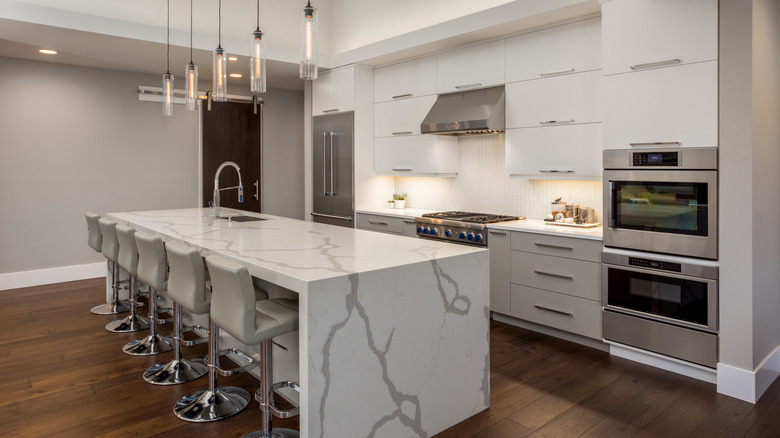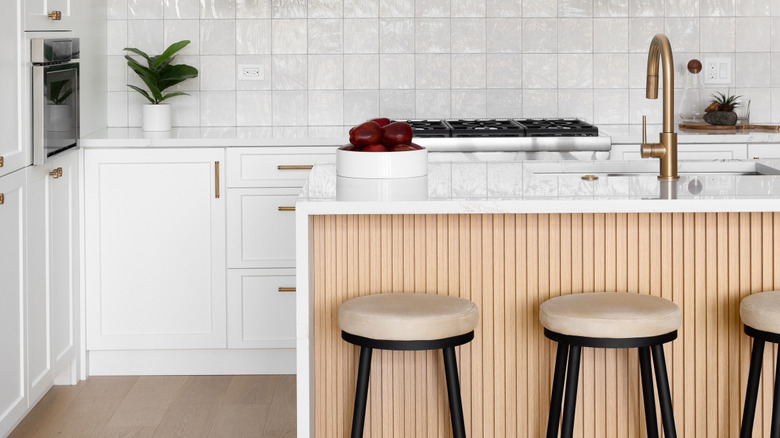It's Time To Say Goodbye To Waterfall Kitchen Islands: Here's Why Designers Hate Them
Your kitchen is arguably one of the most important spaces in your home. It's where you prepare meals for your family, start your day with a fresh cup of coffee, or share a bite with your guests. That's why your kitchen design deserves special attention to make this space a welcoming oasis that it's supposed to be. Among the typical kitchen elements to look out for, your kitchen island stands out as one addition that can make or break your kitchen design. Plus, your kitchen island has a real impact on your home's resale value, so it's important to choose wisely. Though you shouldn't rely solely on current trends when picking out the perfect island for your home, keeping some of them in mind can help make sure your kitchen doesn't feel outdated. For instance, one look that seems to be on its way out right now is the waterfall kitchen island.
Thanks to their unique design, achieved by the countertop edge extending over the island sides all the way to the floor, waterfall islands have had their moment in the spotlight. But as interior designer Rosanna Bassford explained to The Spruce, the stone-heavy look of waterfall kitchen islands is now starting to feel overwhelming in small and large kitchens alike. Other design experts have shared similar sentiments, noting how the overuse of waterfall islands in kitchen designs might have made them feel commonplace and unexciting — resulting in the previously popular kitchen island style making your home look dated.
Making waterfall kitchen islands feel lighter and more personal
To lighten the visual load of stone-heavy waterfall islands, Rosanna Bassford suggests updating the island ends with textured wood panels, like fluted or reeded wood (via The Spruce). Other designers echo this advice, highlighting mixed materials and textured edges as their go-to for breaking up the monotony and adding some dimension to the kitchen island area. Aside from offering heightened visual interest, combining materials like wood and metal with stone in your kitchen island can help you achieve a custom, intentional look.
As you're playing around with this innovative way to spice up your kitchen island, don't forget to consider how your upgraded kitchen island might fit into your overall kitchen aesthetic. For example, dressing your kitchen island with fluted wood paneling might be a better choice if your kitchen leans towards modern or Scandinavian style, as it adds subtle visual interest to sleek, minimalist spaces. Meanwhile, a more traditional panel style like tongue-and-groove might feel out of place in contemporary spaces. Since it brings a more casual, cozy, and familiar vibe, this type of panel would feel more at home in classic or country-style kitchens with rustic charm.

